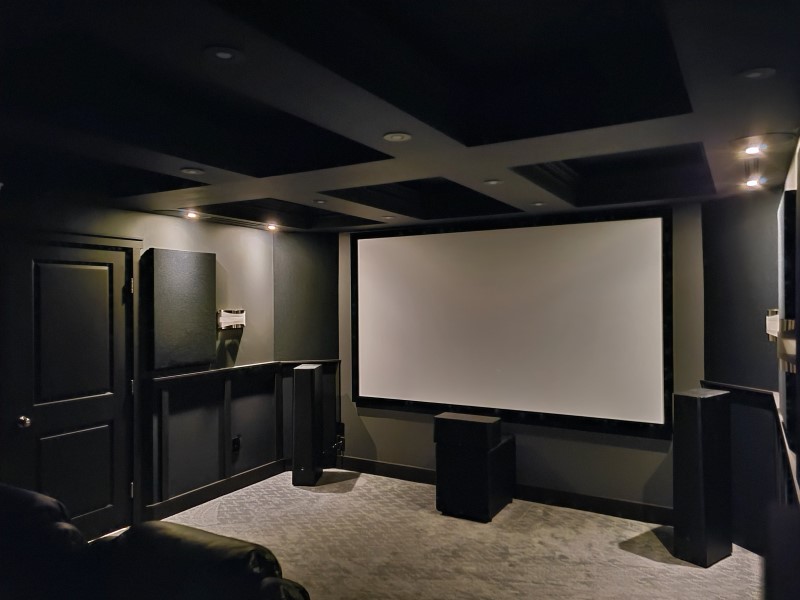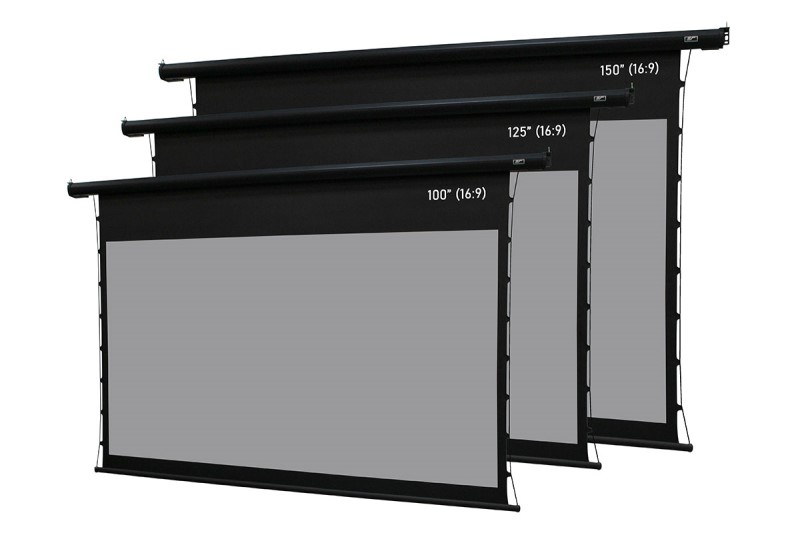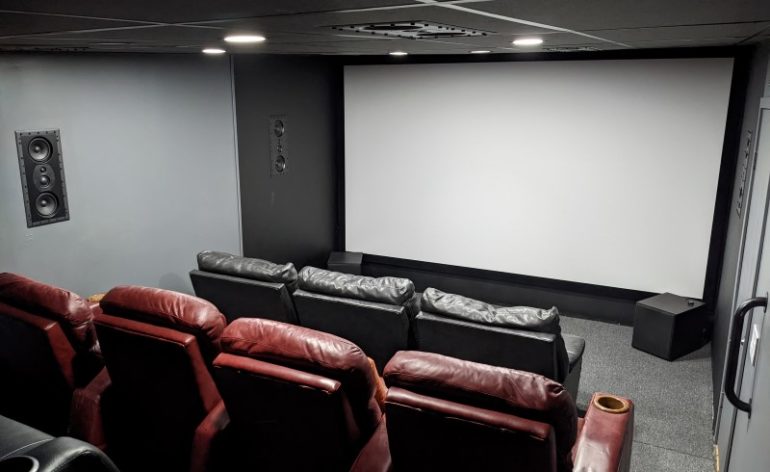Expensive vs. Cheap Projection Screens – What Are You Paying For?
When shopping for home theater equipment, it is common to look for savings. Do you need an AV receiver with every possible feature or can you save some money by getting something with fewer bells and whistles? Do you need floorstanding speakers or can you save some money (and get better performance) out of bookshelf speakers? When it comes to projection screens, there is a lot of money to be saved or spent. If you want a screen that costs a little over $100, it exists. Want to spend north of $2k? That’s out there too. But when you look at expensive vs. cheap projection screens, what are you actually paying for? More importantly, is it worth it? Let’s discuss.
Type of Projection Screens
Before we can begin, let’s talk about the two main types of projection screens. There are fixed-frame and retractable. Of course, there are other options out there (pull-up, tripod, DIY, etc.), but these are the two main types we’ll be addressing. For clarity, a fixed-frame screen is one that is attached to a wall and never moves. It is like a blank picture. A retractable screen is one that is in a case that is attached to the ceiling. The screen retracts into this case when not in use.

Screen Material
As you’d expect, when you are shopping for projection screens, you are expecting that paying for the expensive one should give you better material vs. the cheap one. You wouldn’t be wrong. But what makes screen material “good?” In general, “good” screen material has a uniform appearance (no texture) and uniform reflective properties. If a screen claims a 1.0 gain, then the entire screen should measure at 1.0 gain. This is usually most of what you are paying with the more expensive screens. This doesn’t mean you can’t find cheaper screens that are very accurate. You just need to read multiple reviews to be sure.
If you are shopping for an acoustically transparent projection screen, the screen material is even more important. It needs to both reflect light and allow sound through. To do so, many screens use a woven material. This gives the screen a texture. With a tight enough weave, you can sit very close to the screen without seeing the weave. Cheaper screens? That weave is visible from farther away.

Lastly, when shopping for an ALR (Ambient Light Rejecting) screen, the quality and type of ALR makes a big difference in cost. If you are shopping for a UST (ultra-short throw) projector, getting a good ALR screen is paramount. The ALR screens have all the above considering plus how well they reject light from different angles. This is why ALR screens are (generally speaking) often the most expensive.
Fixed Frame Projection Screens
When you are thinking of paying for a fixed frame projection screen, there don’t seem to be a lot of differences between the expensive vs. the cheap ones. They are just rectangles on a wall. How different can they be? In general, the more expensive fixed-frame screens have better frames. They are easier to assemble and are easier to get perfectly square.
Retractable Projection Screens
Roll-up or retractable projection screens have their own considerations. The retracting mechanism is a point of failure. Whether it is a manual mechanism or motorized, one mistake in how it retracts can irreparably damage that expensive screen. Plus, if you can’t retract or pull-down the screen, it can’t exactly be used as intended. Part of the cost of the retractable screen is the longevity and quality of the retracting mechanism.

The second consideration is tensioning. More expensive retractable projections screens will have tab-tensioning. This keeps the screen taut. Of course, this can be done well or poorly. Plus, it makes retracting the screen more precise in order to avoid damage.
Lastly, the type of retracting will make a big difference in the price you pay for the cheap vs. the expensive projection screen. Motorized is more. IR control is more. Smaller cases (requiring smaller motors and mechanisms) cost more. You get the idea.
Masking
The last consideration is masking. There are different aspect ratios for screens. While 16:9 is most common, some people prefer to have options. They want the black border to perfectly frame the image no matter what they are watching. Masking can do this. With a fixed frame screen, you can add magnetic panels to re-size the screen. Other options for both retractable and fixed frame include motorized masking that happens with a push of a button. If that sounds expensive…well, it is. You can often think of masking as a multiplier. Take the cost of the regular screen and multiple it a couple of times to get the price with masking. It isn’t cheap. But it is very cool.
So Expensive is Definitely Better?
Not so fast there, we never said that. When you pay for a more expensive projection screen vs. a cheaper one, you expect certain things. We’d even be inclined to say that you probably get most of them. But that doesn’t mean that the cheaper projection screens are not worth buying. Around here, we often recommend Silver Ticket fixed-frame screens. These are some of the least expensive on the market but they offer great value and performance.
Want our full recommendations? We’ve got them here.


